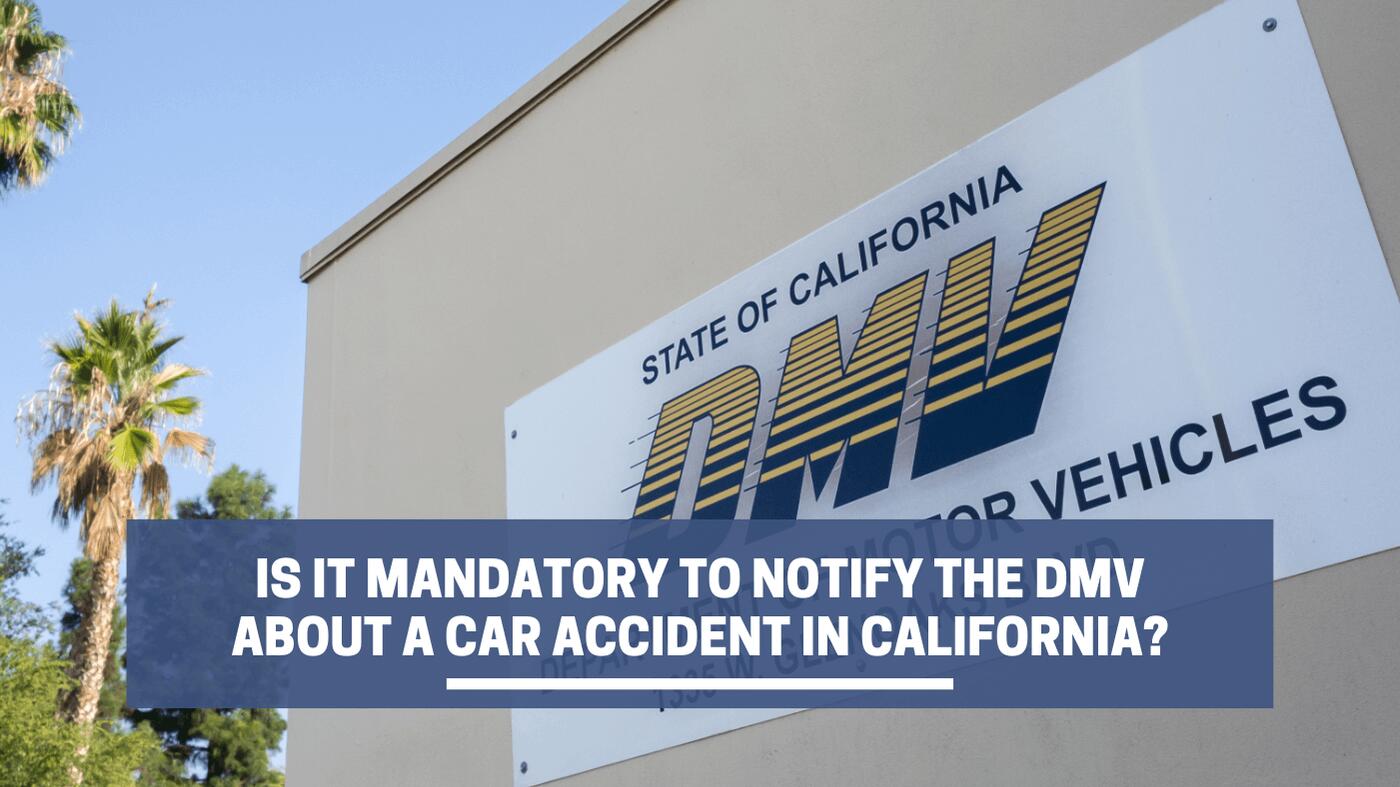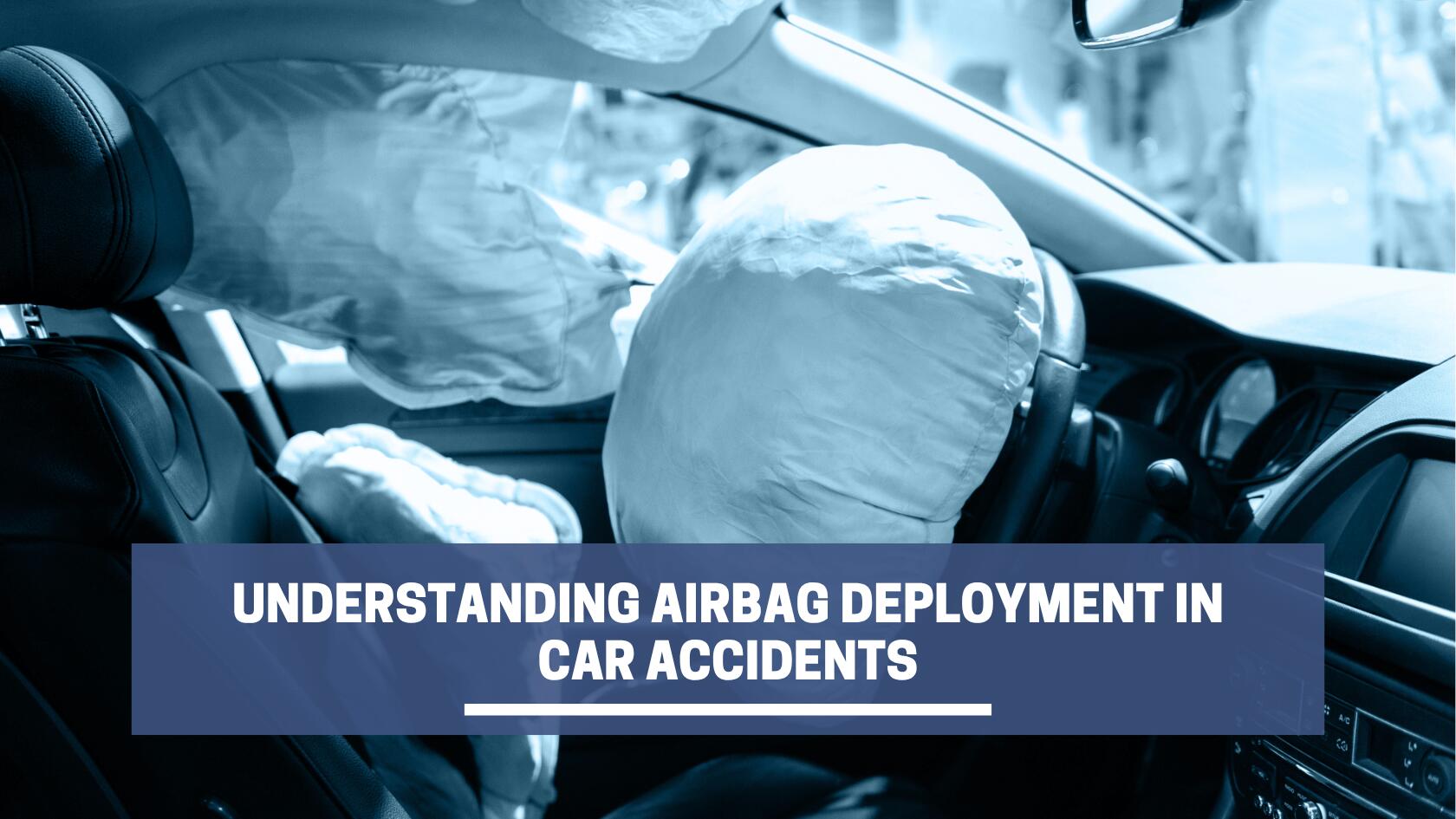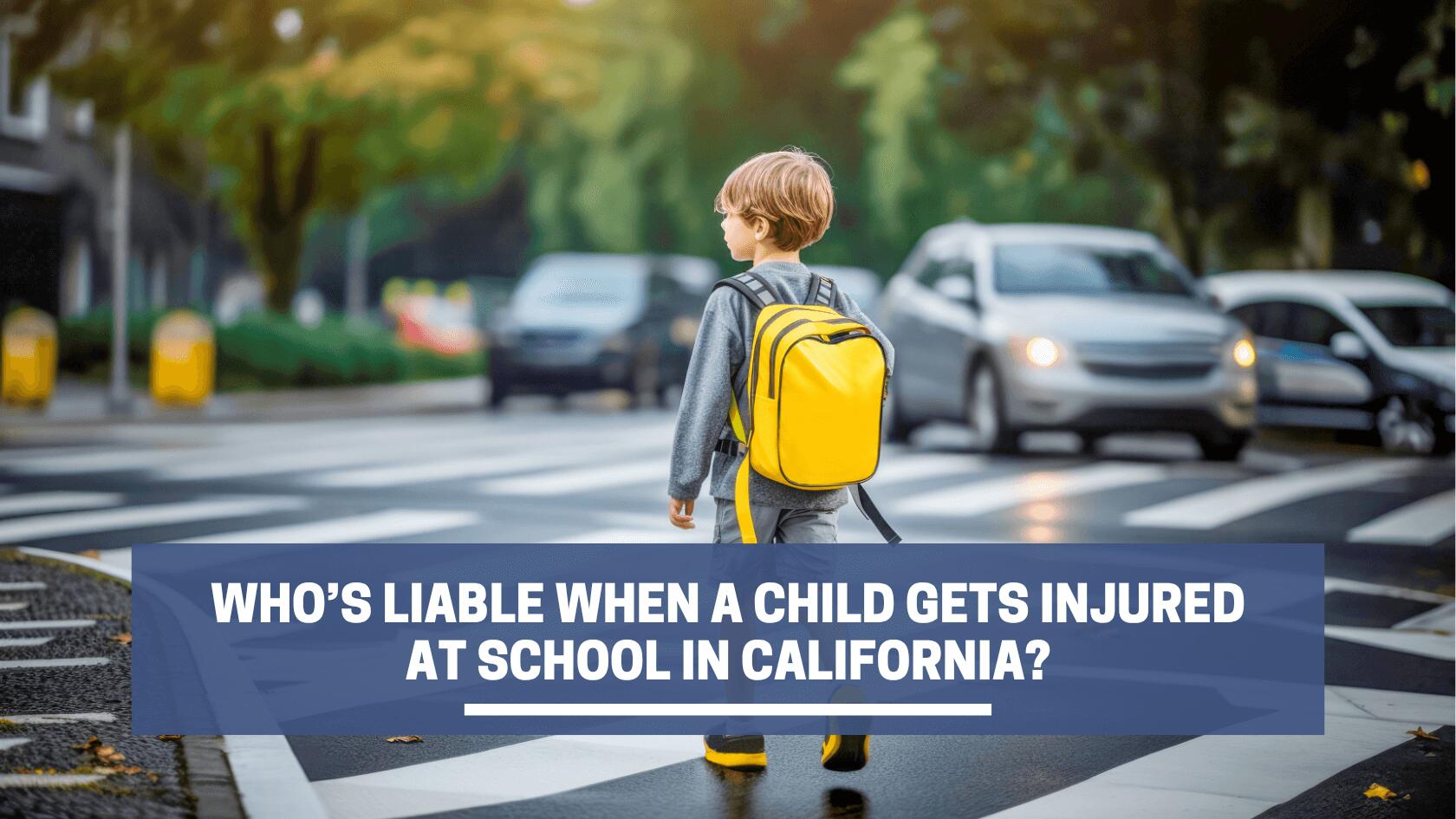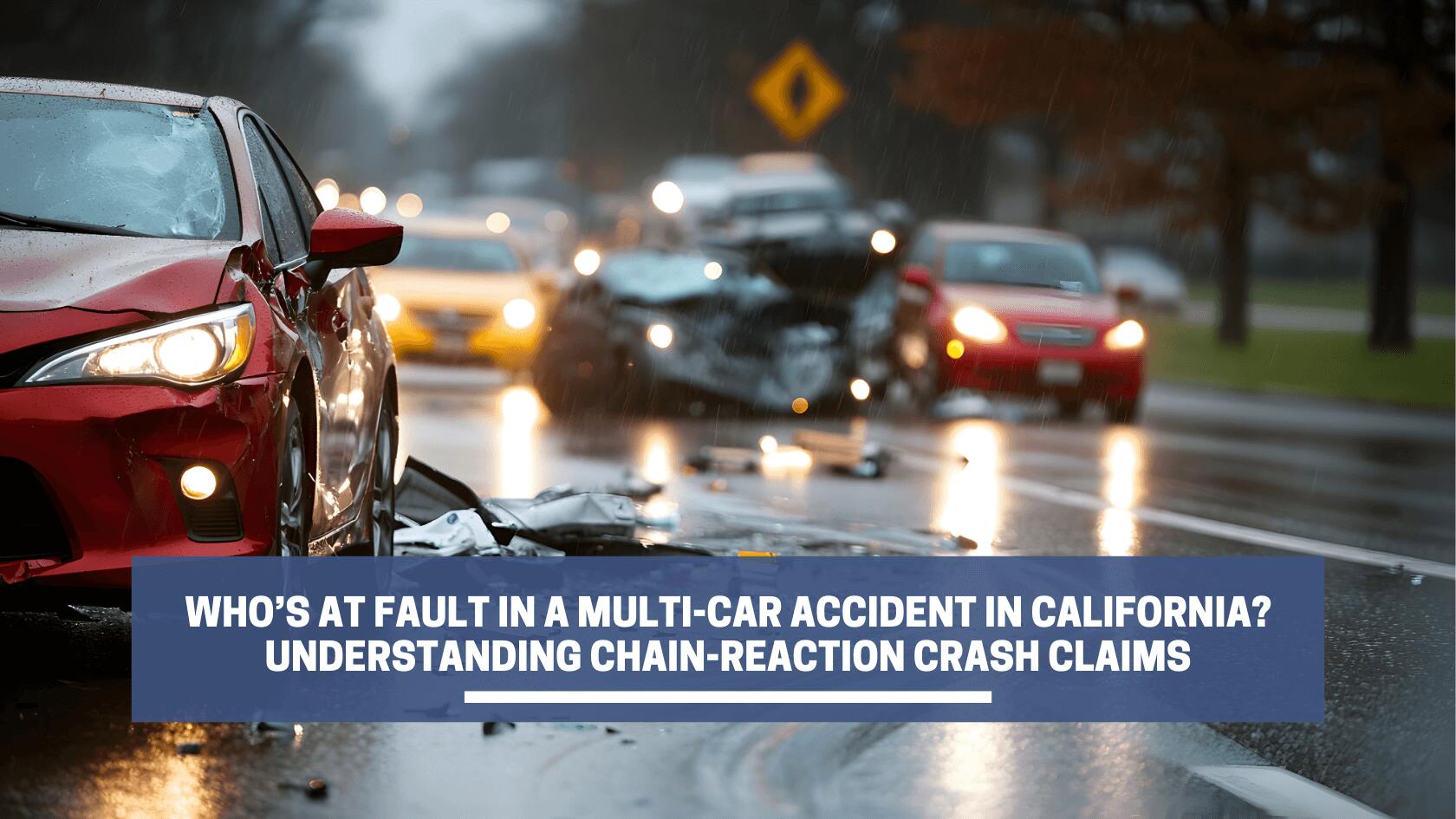Thousands of car accidents happen in California every year, leading to property damage and injuries. In Los Angeles County alone, there were 4,522 crash-related fatalities and injuries in 2023.
If you’re involved in a collision, you need to know your rights and responsibilities, including when to report the incident to the DMV. California mandates reporting under specific circumstances; not following these requirements can lead to legal consequences and impact your right to file a claim for compensation.
Learn the reporting requirements for car accidents in California and how a qualified car accident attorney can help you meet these obligations and get you a fair settlement for your accident-related losses.
What’s the Law for Reporting Car Accidents in California?
California has specific laws for when to report a car accident. One requires you to report the collision to the California Highway Patrol (CHP), and the other sets guidelines for reporting to the California Department of Motor Vehicles (DMV).
| Type of Report | When to Report | Forms |
| Report to CHP | Report the collision in writing to the police or CHP within 24 hours if anyone was killed or injured and law enforcement was not present at the scene. If the driver is unable to make the report due to physical incapacity, any occupant present during the collision must report on the driver’s behalf. | CHP 190 – Collision Request Form Fill out the form and submit it by mail or in-person to the nearest location. You must also attach a copy of your driver’s license or ID card or have the form notarized. |
| Report to DMV | Submit a report to the DMV within 10 days of the accident if there is property damage over $1,000 or if anyone is injured or killed, regardless of the circumstances. This is mandatory even if law enforcement has documented the incident. | SR-1 – Report of Traffic Accident Occurring in California Fill out the form online or print and mail it to the DMV. You may have a representative, such as your attorney, help you complete it. |
Form SR-1: A Closer Look
The SR-1 report is the form you must file with the DMV within 10 days if your collision resulted in injuries, fatalities, or more than $1,000 in property damage. Gather the following documents and have them ready when filling out the form:
- Your driver’s license or ID card
- Your vehicle registration card
- Your auto insurance information, such as carrier and policy number
- Your license plate number
- Your vehicle identification number (VIN)
- Name of the other party, vehicle information, and insurance information
The SR-1 form requires you to provide specific details about the collision, including the date and time of the accident and its exact location. For the fastest processing time, the DMV suggests filing the SR-1 online. However, you can download a PDF copy and mail it in or pick it up at any DMV or CHP office.
If you don’t submit the SR-1 within the required timeframe, you may lose your driving privileges in California. You may also lose driving privileges if you don’t have the required insurance coverage when the accident occurs.
What’s the Purpose of the SR-1 Report?
So, you know it’s required, but what’s the purpose of an SR-1 report? This form is an important part of the claims process after an accident and helps the DMV keep accurate driving records for California motorists. Here is why SR-1 is vital to the DMV:
- Accurate record-keeping. Ensures that all involved parties and the specifics of the accident are officially recorded by the DMV.
- Insurance processing. Assists insurance companies in assessing claims by providing a definitive account of the accident, which helps determine liability and coverage.
- Legal documentation. Acts as a legal document that can be used in court if disputes over the accident arise, offering a reliable source of evidence regarding the circumstances.
- Driver record monitoring. Helps the DMV track the incidents associated with a driver, which can influence licensing decisions and insurance rates.
- Fault determination. Aids in establishing fault, especially in complex situations where the details of the accident are contested.
What Type of Accidents Should I Report?
Reporting requirements apply to many car accident scenarios. You must file an SR-1 with the DMV if your crash involves:
- A collision between two or more vehicles, including motorcycles or large trucks
- Any incident where a vehicle strikes a pedestrian or cyclist
- Situations where a vehicle hits a stationary object like a pole, traffic sign, or barrier
- Instances where a passenger is ejected from a vehicle
- Cases where a vehicle flips or rolls over without making contact with other objects
- Accidents on private property, such as in parking lots or private roads
What Else Should I Do After a Car Accident?
When a crash happens, it can be disorienting, especially if you’re injured. Taking the following steps in the hours and days after the incident can help protect your rights and prepare you for the auto insurance claims process.
- Move the vehicle. If you’re able, move your car off the street or highway. This helps prevent a secondary accident and is required under Statute 22651 if you aren’t injured.
- Stay at the scene. Under Statutes 20001 and 20002, you must remain at the scene of an accident and exchange information with the other vehicle’s owner. If you leave the crash site of an accident that resulted in injuries or death, you can receive hefty fines or prison time, depending on the circumstances of the collision.
- Check for injuries and call for help. Check yourself and your passengers for injuries. Call 911 to alert authorities so they can dispatch EMS workers to the scene for immediate medical care.
- Exchange information with the other party. Get the other driver’s information, including their name, birth date, driver’s license number and state, and insurance information.
- Visit a medical professional. Regardless of how you feel immediately after an accident, see a doctor. Some injuries, like whiplash or concussions, might not present symptoms right away. Seeing a doctor helps you get an accurate diagnosis and treatment and documents your injuries, connecting them to the crash.
- Get witness statements. If there are bystanders who saw the accident, ask for their contact information and a brief account of what they saw. Their testimony can help prove what happened and how the other driver is at fault.
- Make a police report. Contact police officers and make a report at the scene. Their report creates an official record of the crash and may contain factual information or an assessment of fault that can help your claim. Request a copy of the report for your case.
- Document the scene. Take photos or videos of the accident scene, including all vehicles involved, visible damage, and road conditions. Also, obtain footage from traffic or surveillance cameras that can provide unbiased documentation of the crash.
- Contact your insurer. Notify your insurance company about the accident as soon as possible. This expedites the investigation and claims process, helping you get compensation quicker.
- Speak with an attorney. Consult a skilled car accident attorney, especially if the accident involves serious damage, injuries, or liability issues. An attorney can protect your rights and help you negotiate for maximum compensation.
Seeking Compensation for Your Injuries and Damages
When you’re involved in an injury crash in California, you can seek damages for your losses from the at-fault party. These can include compensation for:
- Medical bills and future medical care needs
- Lost wages and loss of earning capacity
- Loss of use of your vehicle
- Pain and suffering
- Emotional distress due to loss of enjoyment of life, depression, anxiety, or PTSD
- Property damage to your vehicle or other items destroyed in the crash
You generally have two years to file for damages in a personal injury claim.
Considerations for Pursuing Damages in California
When filing for damages, whether through an insurance claim or a lawsuit in court, you should be aware of certain elements that can affect your settlement. An experienced attorney can guide you through these considerations, helping you get a fair award that covers your expenses.
- Proving liability. To win a car accident settlement in California, you must prove the other driver is liable. The state uses pure comparative fault, meaning your compensation is reduced by your fault percentage. To ensure a fair settlement, collect evidence, such as the SR-1 report and witness statements, with your lawyer’s help to demonstrate the other driver’s negligence.
- Insurance limits. Your settlement depends on the insurance coverage of the at-fault driver. California requires $15,000 (bodily injury), $30,000 (bodily injury per accident), and $5,000 (property damage), but many people carry higher limits. Your attorney can estimate your full damages and negotiate for a settlement within the at-fault driver’s policy amounts.
- Uninsured motorists. You may get compensation through uninsured (UM) or underinsured (UIM) motorists’ coverage in certain accidents. This is elective insurance that you can add to your standard policy. If you carry it, UM pays for all related losses, including pain and suffering, when the other driver doesn’t have insurance or flees the scene.
- Insurance settlement vs. lawsuit. After an accident, you generally have two options for obtaining financial support: insurance claims or lawsuits. Insurance claims are the primary avenue, requiring you to submit a claim, cooperate during an adjuster investigation, and negotiate for a settlement. California law requires insurers to accept or deny the claim within 40 days and payout within 30 days of agreeing on a settlement amount.
You may enter into litigation with the insurer if they refuse to pay on time or settle for an acceptable amount. In this case, you can work with an attorney to file a personal injury claim in court. This allows you to present evidence to a judge and jury, who decide on a fair damage award for your case.
Protect Your Rights After a Crash in California
Reporting an accident to the DMV is an important step after a car collision in California. The SR-1 report helps the DMV track crashes and can be used as vital evidence if you’re hurt in a crash with a negligent driver. Using the SR-1 for your claim can help you get fair compensation for your injuries and hold the other motorist liable for the harm they caused.
Know your rights and responsibilities as a California driver and protect your interests with the help of a car accident attorney so you can get your life back on track after a crash.











